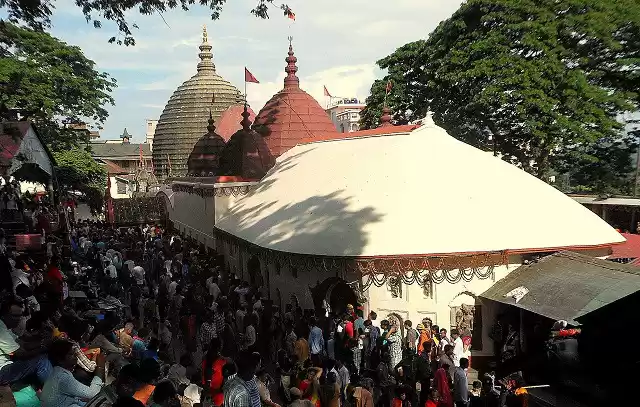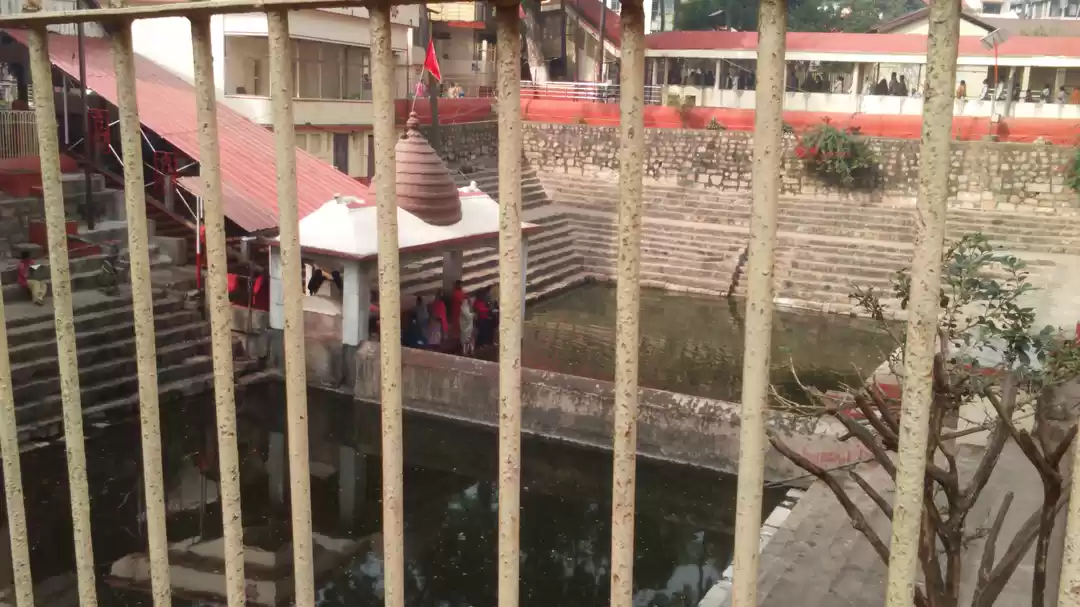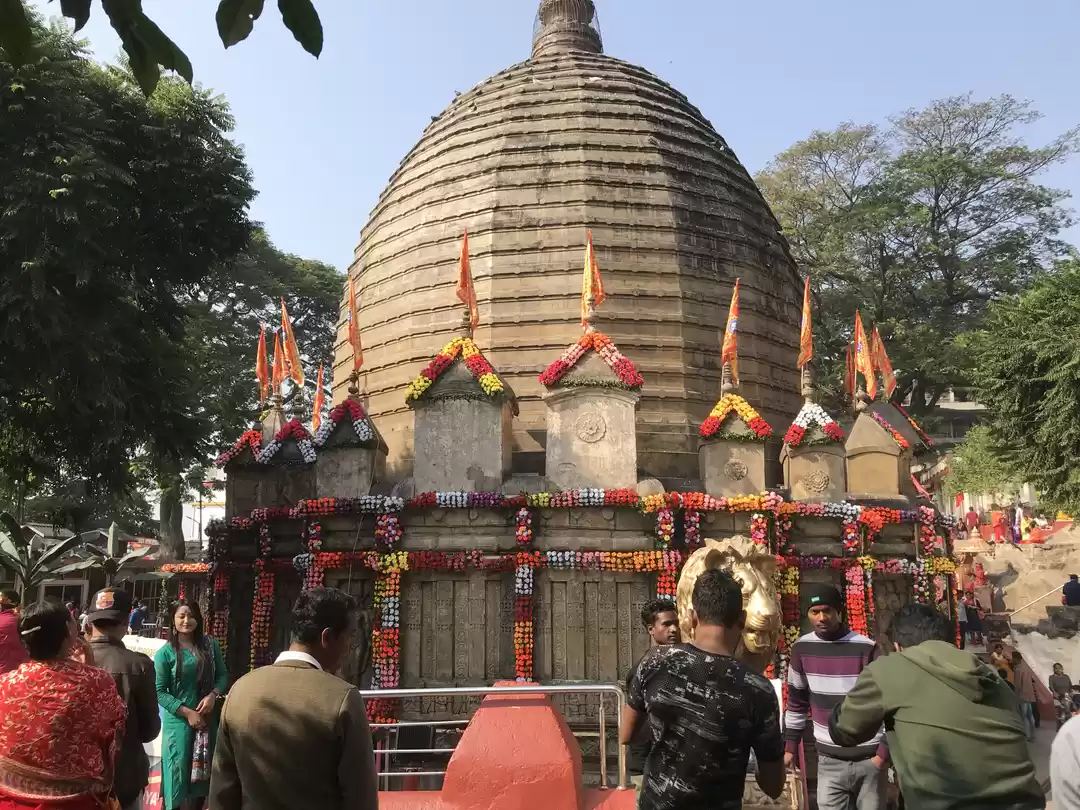Are you looking for a unique and powerful spiritual experience in India? Do you want to witness one of the most ancient and mysterious forms of Tantric worship? Do you want to explore the scenic beauty and cultural diversity of Assam? If yes, then you should definitely visit the Kamakhya Temple, one of the most sacred and revered Shakti shrines in the world.

What is Kamakhya Temple?
Kamakhya Temple is a Hindu temple dedicated to Goddess Kamakhya, who is considered as the supreme manifestation of Shakti, the divine feminine energy. The temple is located on the Nilachal hills in Guwahati, the capital city of Assam. It is one of the 51 Shakti Peethas, where the body parts of Sati, the consort of Lord Shiva, fell after she immolated herself in protest of her father’s disrespect towards Shiva.
The Kamakhya Temple is also known as the Kamrup-Kamakhya Temple, as it is situated in the ancient kingdom of Kamrup. The temple is a major pilgrimage center for Tantric worshippers and Hindus alike, who flock to this temple to seek the blessings of Goddess Kamakhya. The temple is also a symbol of female empowerment and fertility, as it celebrates the menstrual cycle of the goddess as a natural and sacred phenomenon.
What is the history and legend of Kamakhya Temple?
The history and legend of Kamakhya Temple are intertwined with the mythology of Sati and Shiva. According to the legend, Sati was the daughter of King Daksha, who was a staunch devotee of Lord Vishnu. Sati married Lord Shiva against her father’s wishes, as he considered Shiva to be an ascetic and a renunciant. Daksha decided to perform a grand yagna (fire sacrifice) and invited all the gods and goddesses except Shiva and Sati. Sati felt humiliated by her father’s act and decided to attend the yagna anyway, hoping to pacify him. However, when she reached there, she found that Daksha had not arranged any seat or respect for her or Shiva. He also insulted Shiva in front of everyone. Unable to bear this, Sati jumped into the sacrificial fire and killed herself.
When Shiva heard about this, he was enraged and grief-stricken. He carried Sati’s corpse on his shoulder and started performing tandava (cosmic dance) across the universe, causing destruction and chaos everywhere. To stop this, Lord Vishnu used his Sudarshana Chakra (discus weapon) to cut Sati’s body into 51 pieces, which fell on different places on earth. These places came to be known as Shakti Peethas, where the goddess is worshipped in various forms.
The place where Sati’s yoni (vulva) fell came to be known as Kamakhya Temple. The name Kamakhya means “the one who fulfills all desires”. It is believed that Goddess Kamakhya grants boons to her devotees who worship her with devotion and sincerity.
The history of Kamakhya Temple dates back to several centuries. The original temple was built by the Koch king Naranarayan in 1565 CE, after he defeated the Mughals who had destroyed it earlier. The temple was later renovated and expanded by several other kings and dynasties, such as Ahom, Koch Bihar, etc. The temple complex also houses several other temples dedicated to different deities, such as Lord Shiva, Lord Vishnu, Goddess Kali, Goddess Tara, Goddess Bhuvaneshwari, etc.
What is the architecture and deities of Kamakhya Temple?
The architecture of Kamakhya Temple is unique and intricate. The temple consists of three chambers: the garbhagriha (sanctum sanctorum), the calanta (sacrificial hall), and the pancharatna (assembly hall). The garbhagriha is where the main deity, Goddess Kamakhya, is worshipped. Unlike other temples where the goddess is represented by an idol or a statue, here she is worshipped in the form of a yoni-like cleft with a natural spring that flows with her menstrual blood once a year. The cleft is covered by a red cloth and adorned with flowers and vermilion. The devotees offer prayers and offerings to the goddess by touching or kissing the cloth.
The calanta is where animal sacrifices are performed during certain festivals and occasions. The animals are offered to Goddess Kali, who is considered as another form of Goddess Kamakhya. The blood of the animals is collected in a large pit and later distributed among the devotees as prasad (holy food).
The pancharatna is where the devotees gather for darshan (viewing) and aarti (worship) of the goddess. The hall is decorated with beautiful paintings and sculptures depicting various aspects of the goddess and her legends. The hall also has five shikhara (spires) on the roof, which represent the five elements of nature: earth, water, fire, air, and ether.
The temple complex also has several other temples dedicated to different deities, such as Lord Shiva, Lord Vishnu, Goddess Kali, Goddess Tara, Goddess Bhuvaneshwari, etc. These temples are located in different directions and levels of the Nilachal hills, offering a panoramic view of the surroundings. Some of the prominent temples are:
Bhubaneshwari Temple: This temple is dedicated to Goddess Bhubaneshwari, who is considered as the queen of the universe. The temple is located on the highest point of the Nilachal hills and offers a breathtaking view of the Brahmaputra river and the city of Guwahati. The temple is also famous for its sunrise and sunset views.
Umananda Temple: This temple is dedicated to Lord Shiva, who is also known as Umananda or Bhasmacala (the one who resides on ashes). The temple is located on a small island in the middle of the Brahmaputra river, which is accessible by boat. The temple is said to be the place where Shiva burnt Kamadeva (the god of love) to ashes with his third eye for disturbing his meditation.
Navagraha Temple: This temple is dedicated to the nine planets (navagraha) of Hindu astrology: Sun, Moon, Mars, Mercury, Jupiter, Venus, Saturn, Rahu, and Ketu. The temple is located on a hilltop and has nine shivalingas (phallic symbols) representing the nine planets. The temple is visited by people who seek astrological remedies and blessings from the planets.
Bagala Temple: This temple is dedicated to Goddess Bagala, who is considered as one of the ten Mahavidyas (great wisdom goddesses) of Tantric worship. The temple is located near the Kamakhya Temple and has a yellow-colored idol of the goddess. The goddess is worshipped for protection from enemies, diseases, and dangers.
What are the rituals and festivals of Kamakhya Temple?
The rituals and festivals of Kamakhya Temple are diverse and colorful. The temple follows a strict schedule of daily pujas (worship) and ceremonies that are performed by the priests and devotees. Some of the common rituals are:
Snana (bathing): The goddess is bathed every morning with water from the Brahmaputra river and milk from a buffalo. The bathing ritual is accompanied by chanting of mantras (sacred hymns) and offering of flowers and fruits.
Shodashopachara Puja (sixteen services): The goddess is offered sixteen services throughout the day, such as sandalwood paste, incense, lamps, food, clothes, jewelry, etc. The services are done with devotion and reverence by the priests and devotees.
Aarti (worship): The goddess is worshipped twice a day with aarti, which is a ritual of waving lamps in front of her. The aarti is done with singing of bhajans (devotional songs) and clapping of hands by the devotees.
Prasad (holy food): The goddess is offered various types of food as prasad, such as rice, lentils, vegetables, sweets, fruits, etc. The prasad is cooked in large quantities in the temple kitchen and distributed among the devotees after the puja.
The festivals of Kamakhya Temple are celebrated with great fervor and enthusiasm by the devotees. Some of the major festivals are:
Ambubachi Mela: This is the most important and popular festival of Kamakhya Temple, which marks the annual menstruation of Goddess Kamakhya. The festival is celebrated for four days in June or July every year. During this period, the temple remains closed for three days as it is believed that the goddess goes through her menstrual cycle. The devotees wait outside the temple for her to resume her normal state. On the fourth day, the temple reopens and the devotees rush inside to get a glimpse of the goddess and her red cloth that is soaked with her blood. The cloth is considered as highly auspicious and powerful and is distributed among the devotees as prasad. The festival also attracts thousands of Tantric sadhus (ascetics) from all over India, who perform various rituals and practices at the temple premises.
Durga Puja: This is another major festival of Kamakhya Temple, which celebrates the victory of Goddess Durga over the demon Mahishasura. The festival is celebrated for ten days in September or October every year. During this period, the temple is decorated with lights and flowers and various cultural programs are organized by the devotees. The festival The festival culminates with the immersion of the idols of Durga and her children in the Brahmaputra river on the tenth day, which is called Vijaya Dashami.
Pohan Biya: This is a unique festival of Kamakhya Temple, which celebrates the marriage of Goddess Kamakhya with Lord Kameshwara (Shiva). The festival is celebrated for two days in January or February every year. During this period, the goddess is taken out of the temple in a palanquin and carried to a nearby temple of Lord Kameshwara. There, the priests perform the wedding rituals and exchange garlands and vermilion between the deities. The devotees also participate in the ceremony and offer gifts and blessings to the divine couple. The festival symbolizes the union of Shakti and Shiva, the feminine and masculine principles of creation.
Durgadeul: This is another festival of Kamakhya Temple, which celebrates the spring season and the renewal of life. The festival is celebrated for three days in March or April every year. During this period, the goddess is adorned with colorful clothes and jewelry and taken out of the temple in a procession. The devotees also dress up in their best attire and join the procession, dancing and singing along the way. The festival also involves various cultural and sports activities, such as boat races, cockfights, bullfights, etc.
Vasanti Puja: This is a festival of Kamakhya Temple, which celebrates the birthday of Goddess Kamakhya. The festival is celebrated for one day in April or May every year. During this day, the goddess is offered special pujas and prayers by the priests and devotees. The devotees also offer various types of flowers, fruits, sweets, and coconut to the goddess as prasad. The festival marks the onset of summer and the abundance of nature.
Madanadeul: This is a festival of Kamakhya Temple, which celebrates the love and romance between Goddess Kamakhya and Lord Kameshwara. The festival is celebrated for one day in May or June every year. During this day, the goddess is decorated with red flowers and vermilion and taken out of the temple in a palanquin. The devotees also follow her with red flowers and vermilion in their hands, chanting her name and praises. The festival signifies the passion and attraction between Shakti and Shiva, the feminine and masculine energies of life.
Ambuvasi: This is a festival of Kamakhya Temple, which celebrates the purification and rejuvenation of Goddess Kamakhya after her menstruation. The festival is celebrated for three days in June or July every year. During this period, the temple remains open for all devotees who wish to seek the blessings of the goddess. The devotees also offer water to the goddess as a symbol of cleansing and refreshing her. The festival marks the end of monsoon and the beginning of a new cycle of life.
Also Read: The Mystical Charms of Maa Kamakhya Temple.

What are the tourism and attractions of Kamakhya Temple?
The tourism and attractions of Kamakhya Temple are manifold and diverse. The temple attracts visitors from all walks of life, who come to experience its spiritual, cultural, historical, and natural aspects. Some of the tips and suggestions for tourists and pilgrims who wish to visit Kamakhya Temple are:
How to reach: The temple is easily accessible by road, rail, and air from various parts of India. The nearest airport is Lokpriya Gopinath Bordoloi International Airport in Guwahati, which is about 20 km away from the temple. The nearest railway station is Guwahati Railway Station, which is about 8 km away from the temple. The nearest bus stand is Adabari Bus Stand, which is about 5 km away from the temple. There are also auto-rickshaws, taxis, and buses available from these places to reach the temple.
What to wear: The temple has a dress code for both men and women who wish to enter its premises. Men are required to wear dhoti (a long cloth wrapped around the waist) or kurta-pyjama (a long shirt and loose pants) with a gamcha (a cotton towel) around their neck or shoulders. Women are required to wear saree (a long cloth draped around the body) or salwar-kameez (a long tunic and pants) with a dupatta (a long scarf) over their head or chest. The devotees are also advised to avoid wearing leather items such as shoes, belts, bags, etc., as they are considered impure by Hindu tradition.
What to bring: The devotees are advised to bring some essential items for their visit to Kamakhya Temple, such as water bottles, snacks, medicines, umbrellas, cameras, etc. They are also advised to bring some offerings for the goddess, such as flowers, fruits, sweets, coconut, etc., which can be purchased from nearby shops or stalls. The devotees are also advised to bring some cash for paying the entry fees, donations, pujas, etc., as there are no ATMs or card machines available at the temple.
What to expect: The devotees should expect a lot of crowd and queue at Kamakhya Temple, especially during the peak seasons and festivals. They should also expect a lot of noise and activity at the temple, as it is a lively and vibrant place of worship. They should also expect a lot of faith and devotion at the temple, as it is a sacred and powerful place of worship. They should also expect a lot of blessings and grace at the temple, as it is a benevolent and generous place of worship.
The devotees should also explore some other places of interest near Kamakhya Temple, such as:
Bhubaneshwari Temple: This temple is dedicated to Goddess Bhubaneshwari, who is considered as the queen of the universe. The temple is located on the highest point of the Nilachal hills and offers a breathtaking view of the Brahmaputra river and the city of Guwahati. The temple is also famous for its sunrise and sunset views.
Umananda Temple: This temple is dedicated to Lord Shiva, who is also known as Umananda or Bhasmacala (the one who resides on ashes). The temple is located on a small island in the middle of the Brahmaputra river, which is accessible by boat. The temple is said to be the place where Shiva burnt Kamadeva (the god of love) to ashes with his third eye for disturbing his meditation.
Navagraha Temple: This temple is dedicated to the nine planets (navagraha) of Hindu astrology: Sun, Moon, Mars, Mercury, Jupiter, Venus, Saturn, Rahu, and Ketu. The temple is located on a hilltop and has nine shivalingas (phallic symbols) representing the nine planets. The temple is visited by people who seek astrological remedies and blessings from the planets.
Guwahati Zoo: This is one of the largest zoos in India, which houses a variety of animals and birds from different regions and habitats. The zoo is located in Hengrabari Reserved Forest, which is about 12 km away from Kamakhya Temple. The zoo is a great place for nature lovers and wildlife enthusiasts, who can enjoy watching and learning about the animals and birds in their natural settings.
Brahmaputra River Cruise: This is one of the best ways to enjoy the beauty and serenity of the Brahmaputra river, which is one of the largest and longest rivers in India. The cruise is available from various points in Guwahati, such as Fancy Bazar Ghat, Uzan Bazar Ghat, Pandu Port, etc. The cruise offers a scenic view of the river banks, islands, temples, bridges, etc., along with some entertainment and refreshment options on board.
Also Read: 10 Offbeat Places To Explore In Northeast India
Kamakhya Temple is a place that offers something for everyone. Whether you are looking for spirituality, culture, history, or nature, you will find it here.
Kamakhya Temple is a place that will leave you spellbound and mesmerized by its charm and grace. Kamakhya Temple is a place that you should not miss when you visit India.















































